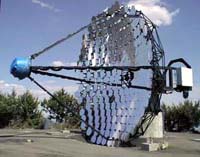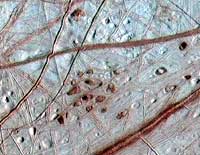
VLT UVES Observes Most Metal-Deficient Star Known [1]
A faint star in the southern Milky Way, designated HE 0107-5240, has been found to consist virtually only of hydrogen and helium. It has the lowest abundance of heavier elements ever observed, only 1/200,000 of that of the Sun – 20 times less than the previous record-holding star.
This is the result of a major ongoing research project by an international team of astronomers [2] . It is based on a decade-lon
Researchers from the University of Pittsburgh Medical Center have made significant progress in identifying the first susceptibility gene for clinical depression, the second leading cause of disability worldwide, possibly providing an important step toward changing the way doctors diagnose and treat major depression that affects nearly 10 percent of the population.
Research results, which were accepted for rapid publication and published today in the American Journal of Medical Genetics, sho

In search of cosmic mayhem
A physicist at Washington University in St. Louis working with scientists at the Smithsonian Institution is unveiling the dark, violent side of the universe.
Studying the highest energy photons known to science, Washington University Associate Professor of Physics James H. Buckley, Ph.D., and his colleagues are analyzing bursts of gamma rays released from massive black holes at the center of so-called active galaxies.
Using the Whipple Ob
Two of the three largest impact craters on Earth have nearly the same size and structure, researchers say, but one was caused by a comet while the other was caused by an asteroid. These surprising results could have implications for where scientists might look for evidence of primitive life on Mars.
Susan Kieffer of the University of Illinois at Urbana-Champaign, Kevin Pope of Geo Eco Arc Research and Doreen Ames of Natural Resources Canada analyzed the structure and stratigraphy of the 65 m

The oozing of glacial material in the floating ice shell on Jupiter’s moon Europa has important implications for future exploration of the enigmatic moon and prospects of life in its ice-covered ocean, according to a University of Colorado at Boulder professor.
Robert Pappalardo, an assistant professor in the astrophysical and planetary sciences department and one of the world’s foremost Europa experts, said the icy moon is believed to contain an ocean some 13 miles under its icy
A high-throughput assay developed by University of Illinois at Chicago chemists has led to discovery of a small organic compound that shows the unusual ability to inhibit cell migration. The new compound, identified as UIC-1005, may play a role in developing new kinds of cancer drugs.
The findings are published in the November issue of the journal ChemBioChem.
“We’ve been looking for chemical compounds that slow the process of cell migration,” said Gabriel Fenteany, assistant